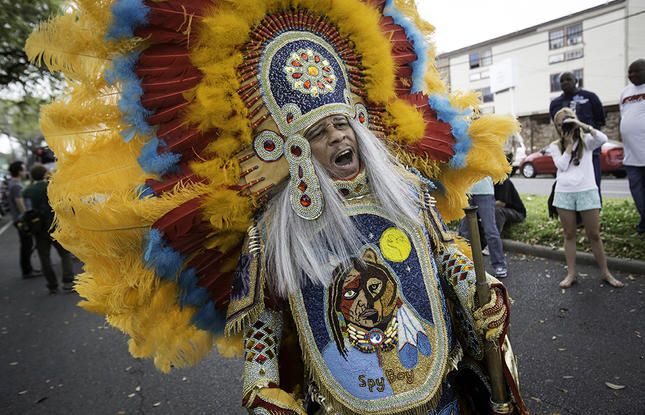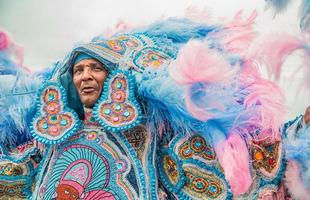A Brief History of Mardi Gras Indians
During Carnival season in New Orleans, the streets come alive with the sounds and sights of the city’s most colorful cultural tradition.
Every Mardi Gras morning, a tradition takes place that is rooted in the deep history of African American New Orleanians. It’s loud, it’s proud and it’s a spectacle that you’ll find nowhere else on Earth.
What are Mardi Gras Indians?
Traditionally, Mardi Gras krewes (social organizations) excluded people of color from parades and balls. Being part of a krewe was exclusive to white, wealthy people, and many events were invitation-only.
So what did New Orleans’ African American community do? They created their own celebrations.
Mardi Gras Indians History
The history of the Mardi Gras Indians is one of challenge, triumph and a mystery.
New Orleans’ Black community was excluded from many early Mardi Gras celebrations, and some of the first Mardi Gras krewes even perpetuated racist stereotypes. Blending West African and Native American influences, the Black community created their own tradition — the Mardi Gras Indians.
While celebrations typically take place during the morning on Fat Tuesday, you might also see Mardi Gras Indians on Super Sunday, the third Sunday in March. This is the day when the Mardi Gras Indians dress in their finest "suits" and engage in a community celebration of history, culture and art, and all are invited.
How to See Mardi Gras Indians
You won’t find their routes on any map, and you can’t Google their locations. You'll need to ask a local where they can be seen. The Indians (many of whom are working-class people) and their entourage wander New Orleans-area backstreets in a celebration that makes for an unforgettable experience, both for the participants and the crowds that follow them.
You can usually count on the Super Sunday procession to start at A.L. Davis Park, but routes can change year-to-year. Check New Orleans & Co.’s calendar for more information.
What to Expect on Super Sunday
The Spy Boy leads the procession. Or rather, he comes before the procession, looking out for rival tribes and to let the Big Chief know when he spots them. Tribes will eventually meet in an explosion of color, drumming and dance. Songs and chants begin with the two Big Chiefs.
As much of a spectacle as the call-and-response chanting and dancing are, the centerpiece of it all is the suits — truly works of art. The Mardi Gras Indians take their costume design cues from both Native American and West African traditions, with a distinctly local twist. Thousands of hours, thousands of dollars and thousands of beads and feathers go into each suit, many of which tell stories of African and African-American history in their designs. Many of them take years of planning and preparation to put together.
How to Learn More About Mardi Gras Indians
You can still see Mardi Gras Indian tradition no matter the time of year you visit. The Donald Harrison, Sr. Museum, located in the heart of the historic 9th Ward, showcases exhibits on the African diaspora, including the Mardi Gras Indians. Visit Mardi Gras World, open year-round, featuring famous floats, costumes and other Mardi Gras memorabilia.




